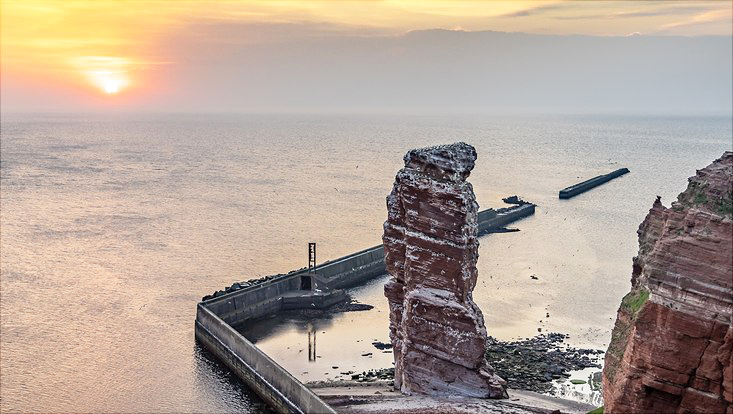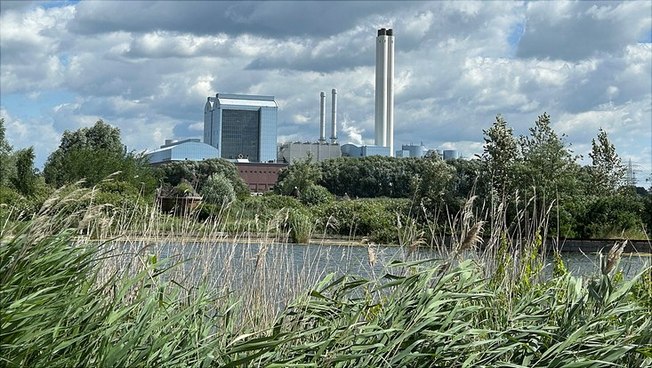Storm Warnings: When the Seafloor Shakes
5 October 2021, by Prof. Dr. Céline Hadziioannou

Photo: D. Luckmann/unsplash
As far back as 1920, a unique tool helped to warn of approaching storms in the North Sea region: a seismometer in Hamburg recorded the movements of the Earth’s crust. When the spikes intensified, the alarm was sounded: it could mean a storm was rolling in from the Atlantic.
The Earth’s crust seems strong and stable: there are entire buildings resting on it, trains run back and forth, and bridges span rivers and valleys. But in reality, the ground is always moving slightly. As a seismologist at the Center for Earth System Research and Sustainability (CEN), I’m investigating these tiny movements, the seismic background noise. Though it can also be produced e.g. by traffic or roadwork, a great deal of this noise comes from ocean waves crashing against the seafloor.
A hundred years ago, fishers and those living in coastal regions benefited from this early-warning system. Wherever storms whipped across the Atlantic, they produced more intensive waves, and with them, increased vibrations in the seafloor. Moving faster than the storm itself, these vibrations spread out in all directions – meaning they could also be picked up by the seismometer in Hamburg. If the readings grew stronger, it was a sure sign that the storm was headed for the coast – and the people living there could be warned in time.
How do the powerful ocean waves transmit their impulse to the ground?

Today I use a network of sensors that are far more sensitive, and which operate at various sites simultaneously, to listen in on the Earth. By comparing the signals from the various sensors, I can gain valuable information. After all, it remains unclear exactly how momentum is transferred from powerful ocean waves to the ground. What we do know is that the topography is an important factor: mountains and hills, or troughs in the ocean floor, produce different seismic signals than flat and smooth surfaces do. The direction of the waves is also important.
When it comes to the North Sea, we’ve now made tremendous strides. On the island Heligoland, we’ve worked together with the University of Kiel to install high-sensitivity seismometers at several locations. By using all the sensors together, we can listen in different directions. If we focus on the Atlantic, we get clear signals from the constantly moving waters off Greenland. But if we switch directions toward the coast, we pick up a very different pattern. There’s clearly a new source that significantly affects the seismic signal here: the tides.
Historical records contain weather events that have not yet been recorded by humans.
This discovery came as a surprise to everyone. Until now, tides moving on relatively flat ground were assumed to be innocuous, with no effect on the vibration of the Earth’s crust. In fact, we only found the signal because we were scanning the higher frequencies. These frequencies can only be detected close to their source – in this case, relatively close to the coast. In contrast, lower-frequency signals can be picked up much farther away.
Advances like this are helping us to understand the composition of the background noise. As a result, the various influencing factors that make up a given signal at a given location can be more accurately identified. After all, I can’t correctly interpret interesting deviations in the readings until I’ve understood the nature of the region’s “normal” seismic state.
As such, seismology offers me an exciting tool for pursuing climate research. I’m currently planning to investigate Hamburg’s historical records from the past hundred years, the pages of which document weather events that no meteorologist or weather station has ever seen. How severe and frequent were the storms back then – and how is climate change shaping them today?
About the author
Professor Céline Hadziioannou is a geophysicist. She and her Working Group are using groundbreaking methods to explore seismic background noise.
She coordinates the European research network SPIN, which combines the promotion of young scientists and cutting-edge research in seismology: Research network opens a window into the Earth’s inner workings
Newspaper: This article was first published as a guest article in the Hamburger Abendblatt as part of a monthly series on climate research. Find all articles of the series here.


